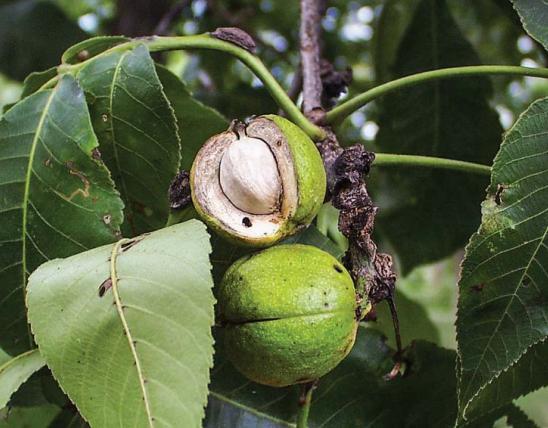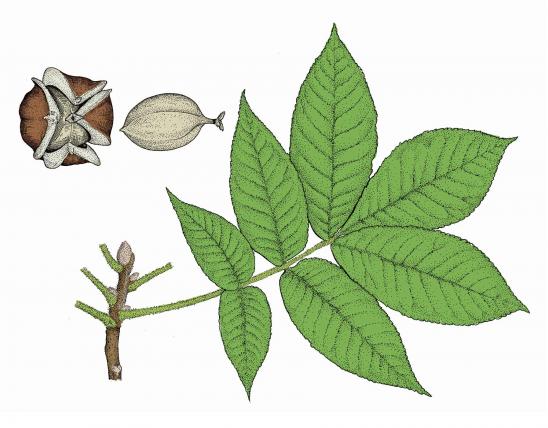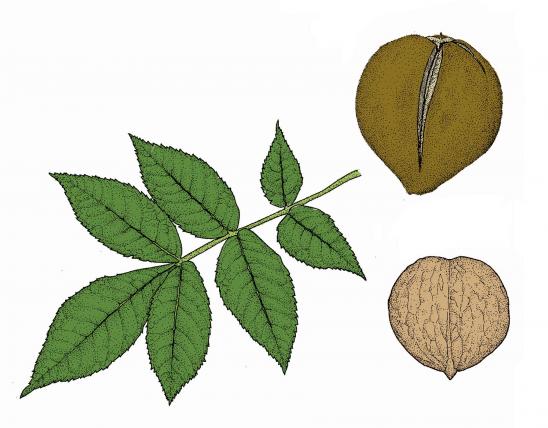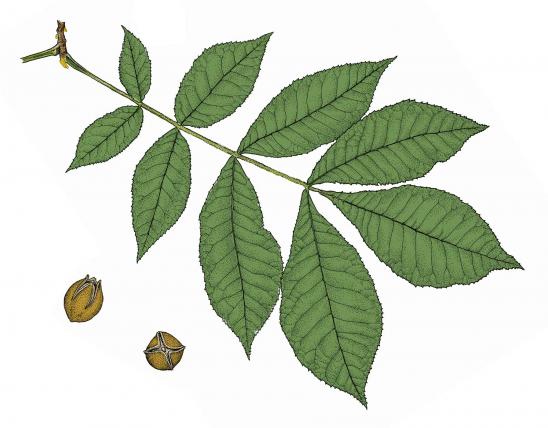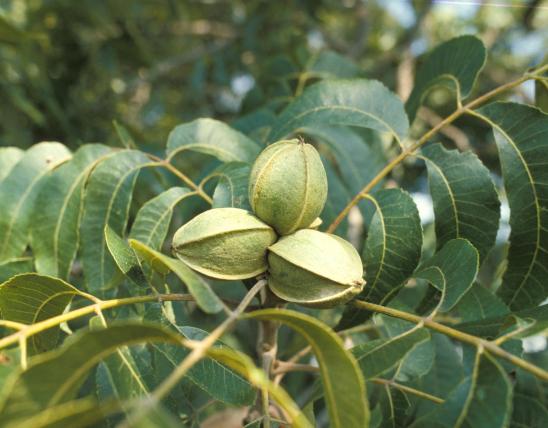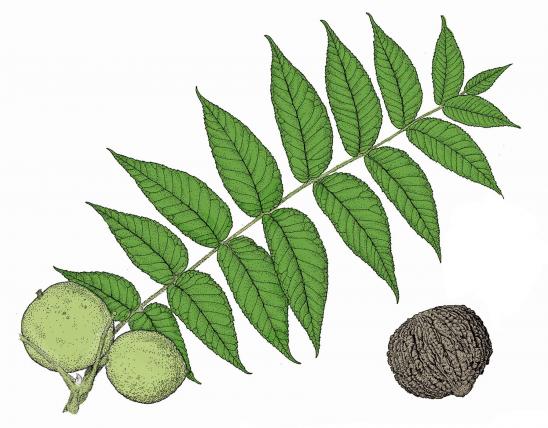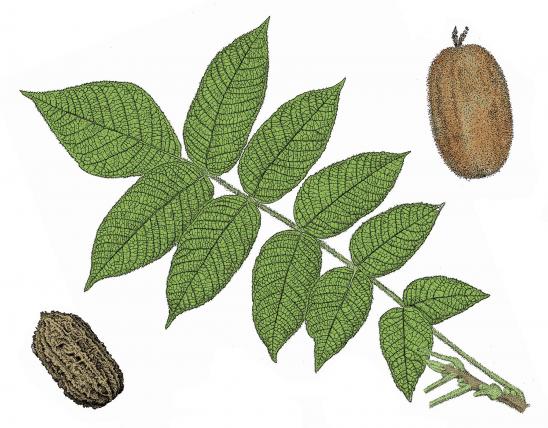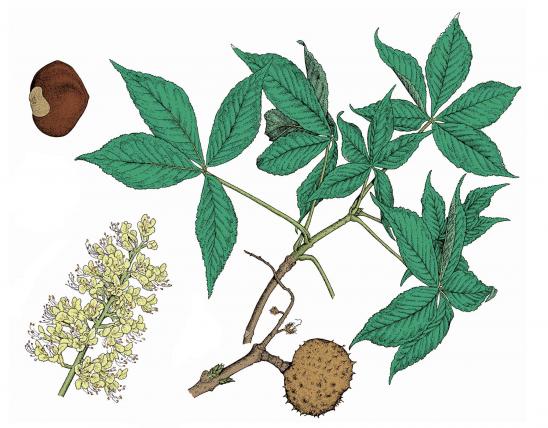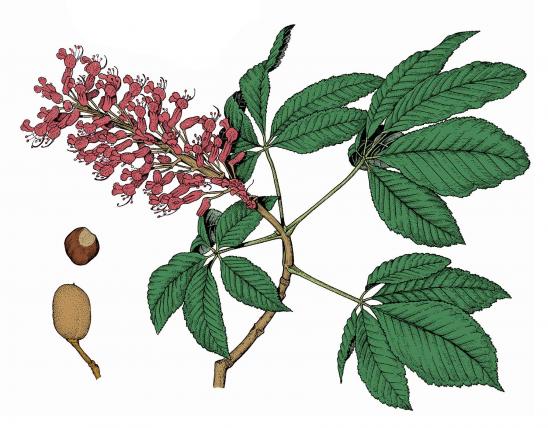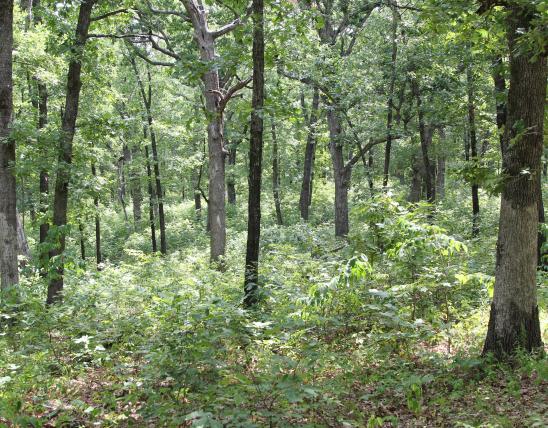
Shagbark hickory is a medium-sized to large tree with a crown 2–4 times longer than broad and shaggy bark.
Leaves are alternate, feather-compound, 8–17 inches long; leaflets 3–5, lance- to pear-shaped, 4–7 inches long, the end leaflet stalked; upper 3 leaflets quite larger than lower 2; pointed at the tip, margins toothed with tufts of hairs along the outer edge of the teeth.
Bark is gray, separating into distinctive thick, long, shaggy strips, free at one end or both ends, curved outward.
Twigs are stout, brown and hairy when young, becoming gray and smooth; pores pale and elongated.
Flowers April–May; male and female flowers separate on the same tree. Male catkins in threes, 4–5 inches long, slender, green, hairy; female flowers 2–5, conical.
Fruits September–October, nuts single or in clusters up to 3, oval or round, 1¼–2 inches long; husk blackish- to reddish-brown, slightly depressed at the tip, splitting in 4 lines; nut light brownish-white, oval, somewhat flattened, with 4 ridges, aromatic.
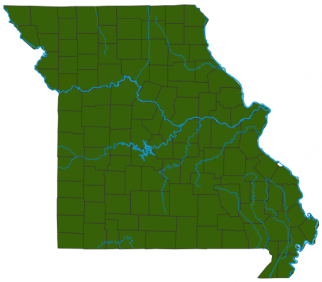
Habitat and Conservation
Status
Human Connections
Hickory is cultivated for its sweet, edible nuts, which have been prized as long as humans have lived on this continent. Explorer and naturalist William Bartram described how the Creek people gathered a "hundred bushels of these nuts in their towns," and how they pounded, boiled, and strained the nuts to obtain a "hickory milk," which he said was "as sweet and rich as fresh cream" and was used in Creek cooking, "especially homony and corn cakes." (It sounds a lot like the almond milk that people drink today.) In later years, the children of pioneers would enjoy social events called "nut cracks," where hickory nuts and walnuts were cracked, shelled, and eaten.
Hickory is also prized for its aromatic wood, which burns long with little or no smoke and is used to produce high-quality charcoal. Some have contended that Missouri ought to be famous for the top-rate charcoal we produce, in large part from our many hickories. Excellent barbecue, of course, requires excellent charcoal.
Hickory wood is a favorite for smoking hams, imparting a subtle, exquisite flavor. Missouri is known internationally for our excellent country-cured smoked hams.
The tough, impact-resistant wood is made into tool handles, athletic goods, agricultural implements, baskets, and at one time, wagons, wagon wheels, and the hinges of cabin doors.
General Andrew Jackson won the admiration of his backwoods troops by sharing with them their hard lot (sleeping on the ground, eating their meager fare); they called him "Old Hickory" for his toughness.
Ecosystem Connections
The nuts are eaten by squirrels, mice, and deer. Squirrels also eat the buds.
Like other hickories, its leaves are eaten by several species of large, showy moths. The largest caterpillar in North America is the hickory horned devil, which few people see until late in the season when the mature caterpillars descend from the tree's high canopy and come to earth to pupate.
The crevices formed by shagbark hickory's thick, peeling bark provide summer shelter for some bats, notably the endangered Indiana bat. The migratory silver-haired bat is another species that commonly finds shelter under loose tree bark such as shagbark hickory's.
































